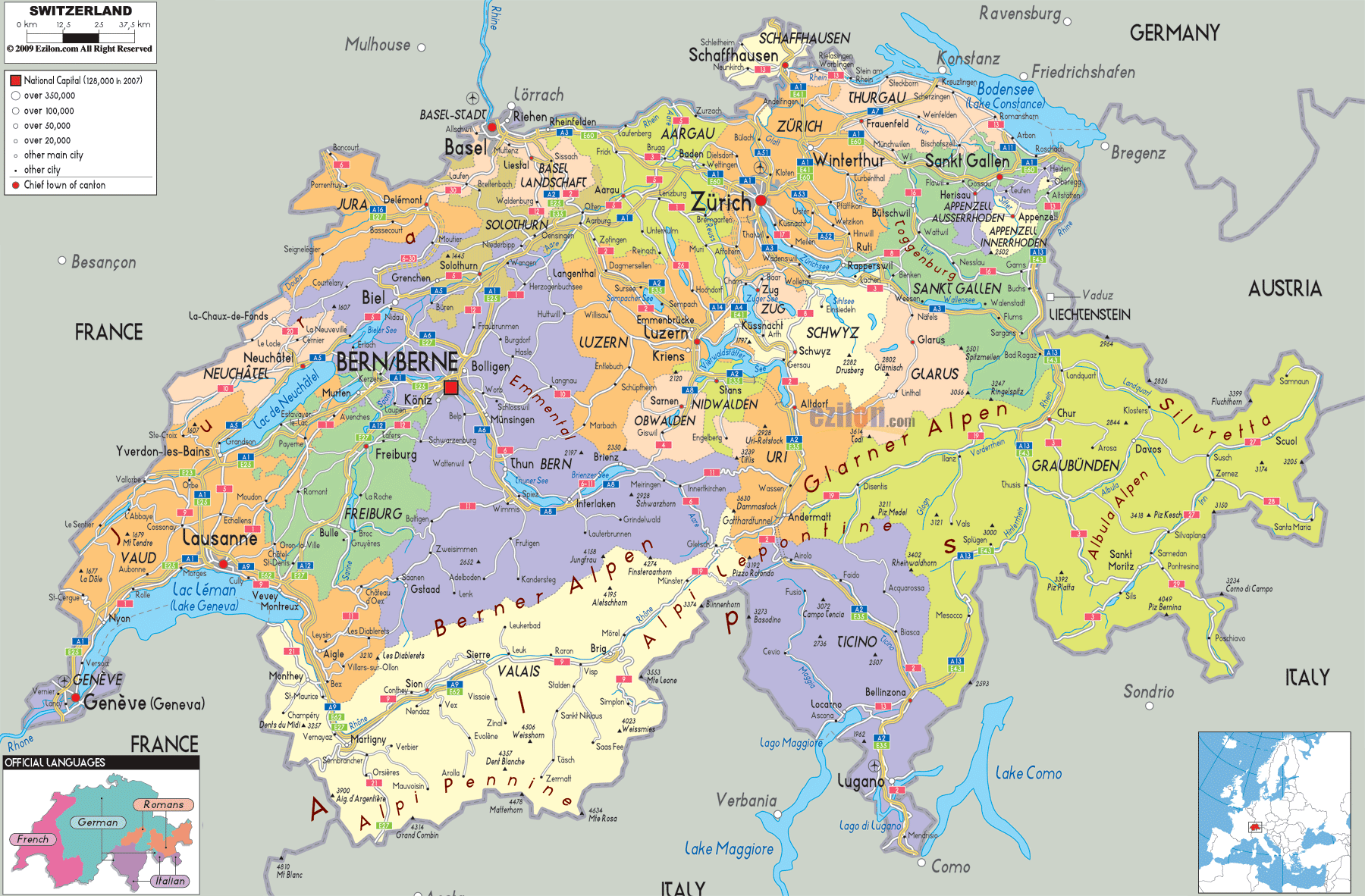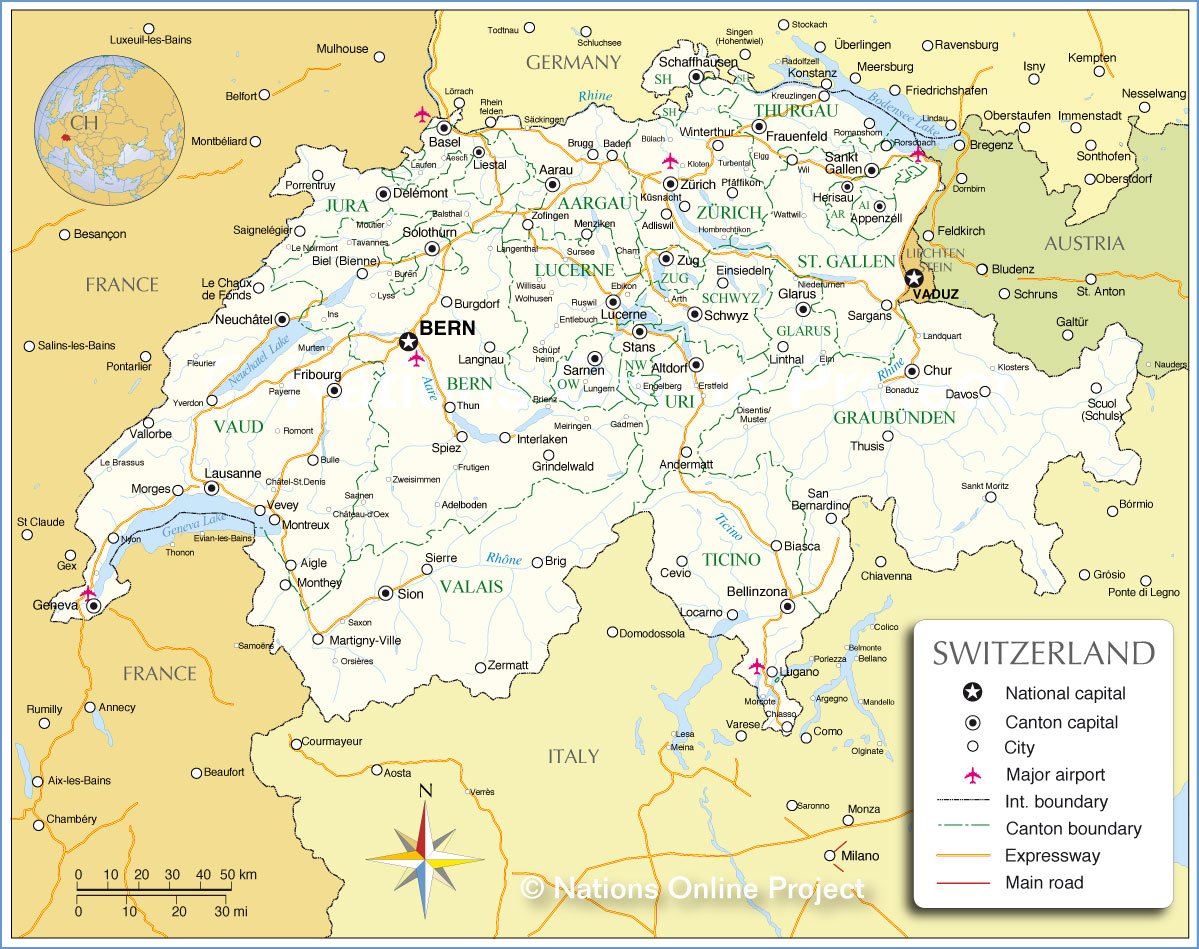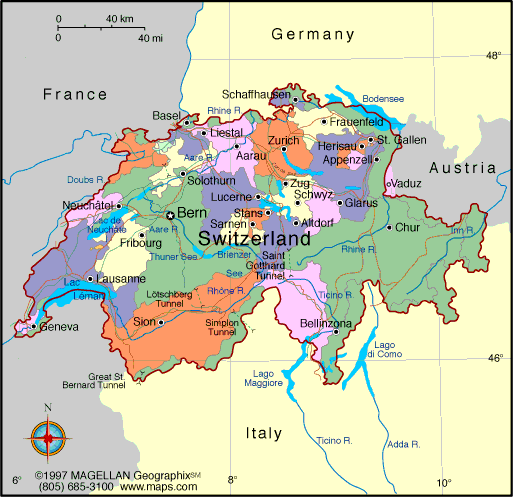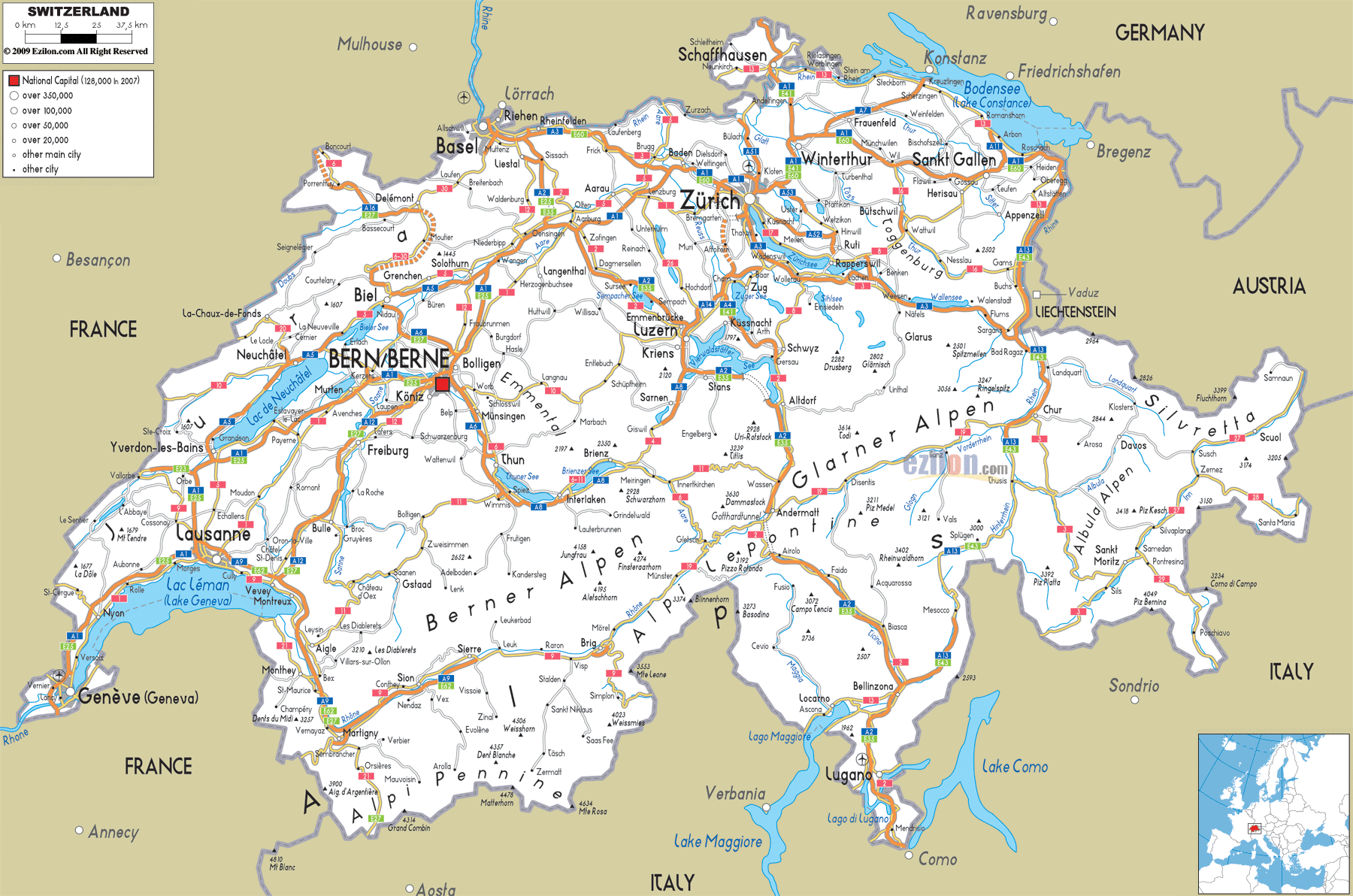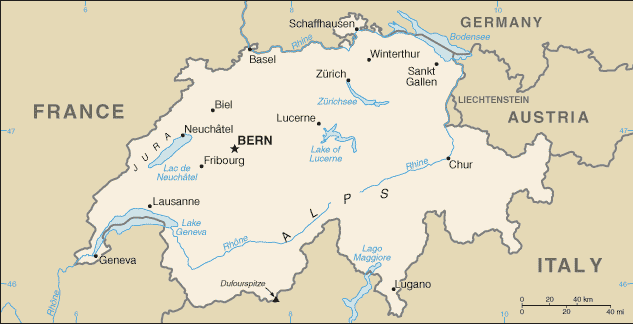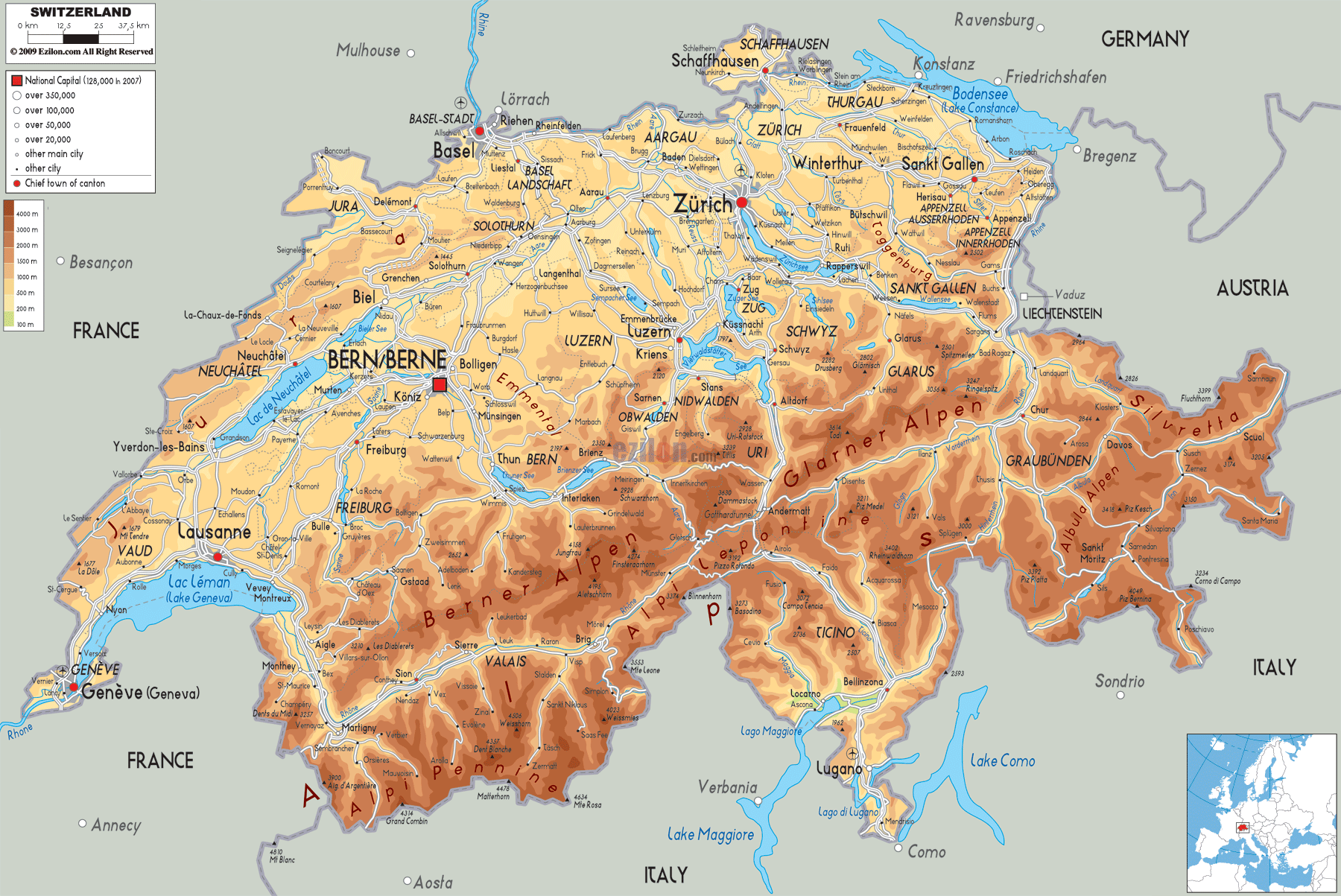 Switzerland is a country in Europe. The Swiss Confederation is a federal directorial republic consisting of 26 cantons, with Bern as the seat of the federal authorities, called Bundesstadt ("federal city"). The country is situated in Western and Central Europe,where it is bordered by Italy to the south, France to the west, Germany to the north, and Austria and Liechtenstein to the east. Switzerland is a landlocked country geographically divided between the Alps, the Swiss Plateau and the Jura, spanning an area of 41,285 km2 (15,940 sq mi). While the Alps occupy the greater part of the territory, the Swiss population of approximately 8 million people is concentrated mostly on the Plateau, where the largest cities are to be found; among them are the two global and economic centres of Zürich and Geneva.
Switzerland is a country in Europe. The Swiss Confederation is a federal directorial republic consisting of 26 cantons, with Bern as the seat of the federal authorities, called Bundesstadt ("federal city"). The country is situated in Western and Central Europe,where it is bordered by Italy to the south, France to the west, Germany to the north, and Austria and Liechtenstein to the east. Switzerland is a landlocked country geographically divided between the Alps, the Swiss Plateau and the Jura, spanning an area of 41,285 km2 (15,940 sq mi). While the Alps occupy the greater part of the territory, the Swiss population of approximately 8 million people is concentrated mostly on the Plateau, where the largest cities are to be found; among them are the two global and economic centres of Zürich and Geneva.The establishment of the Swiss Confederation is traditionally dated to 1 August 1291, which is celebrated annually as Swiss National Day. The country has a long history of armed neutrality—it has not been in a state of war internationally since 1815—and did not join the United Nations until 2002. Nevertheless, it pursues an active foreign policy and is frequently involved in peace-building processes around the world. In addition to being the birthplace of the Red Cross, Switzerland is home to numerous international organizations, including the second largest UN office. On the European level, it is a founding member of the European Free Trade Association, but notably, it is not part of the European Union, nor the European Economic Area (and thus does not use the Euro currency). However the country does participate in the Schengen Area and the EU's single market through a number of bilateral treaties.
